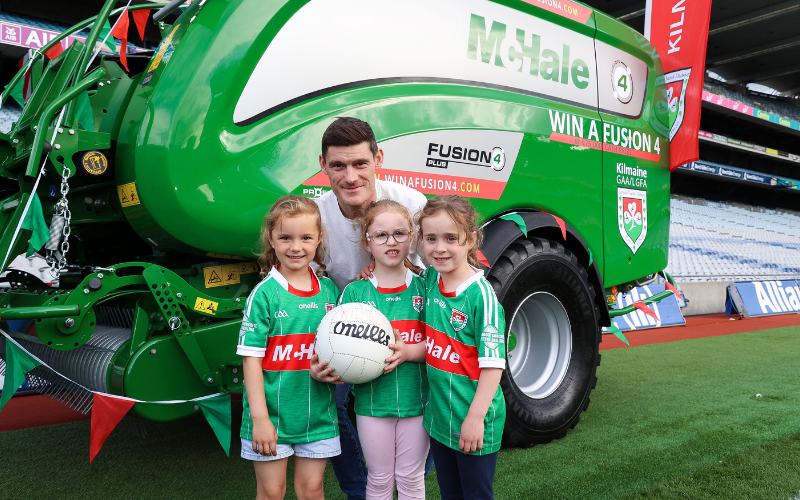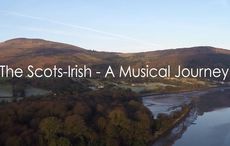Not only has the political landscape in Ireland changed drastically over the past 100 years but the way in which Irish women present ourselves to the world has radically changed, too.
Taking inspiration from the likes of Maureen O’Hara, pop group Bewitched, and rather controversially, the IRA, this new video from Cut looks back at the past 100 years in Irish style and beauty, dividing each decade into a look from Northern Ireland and the Republic of Ireland which, they believe, summed up the style of that particular decade.
And if what we see in this video is to be completely believed, Irish women have been quite influenced by politics and conflict when it comes to our style choices.
Out of the lineup of actresses and pop stars, a favorite of ours is the look from 1960s Northern Ireland, inspired by iconic civil rights activist Bernadette Devlin McAliskey, who was elected to Westminster at just 21 years old. Although she earned the mocking nickname “Castro in a miniskirt” from rivals and media, Devlin was never (and possibly would never have wanted to be) regarded as a style icon but the choice of her image to represent women in Northern Ireland - perhaps not completely true to both sides of the political divide in the North at the time - offset with the look from the Republic, still shows the differences betweeen life for women in the two states in the 60s.
Read more: Forgotten secrets for becoming an Irish beauty.
The video has not been completely without its detractors, however, due to its model Stephanie Koenig sporting a black beret and taking up a fake firearm to represent Northern Ireland in the 1970s - a “look” modelled on an image of female IRA members taken during the same decade.
Despite the video makers claiming they used this particular image as inspiration because they wished to highlight the violence of the times, it seems pretty inappropriate to present a woman holding a fake gun and taking aim as a beauty look - a look you should aspire to achieve essentially - especially in light of the manner in which women were apparently treated within the IRA, and the high levels of discussion about the glamorization of violence in this centenary year.
“Whether or not we were glorifying violence or terrorism by including the IRA look was a question I asked of myself and I think we asked of each other," said writer Josh Potter.
"I wanted to use the look simply because it reflected the violence of the time period. I think we would have done a disservice to the project by leaving that look out, because that would have whitewashed a large part of North Ireland's history."
The chosen image of Northern Irish women has been heavily criticized by Irish Labor Party Senator Mairia Cahill, in particular, and with valid reason. Disregarding the fact that a gun is not, and never should be used as, a fashion accessory, Cahill’s own telling of her personal experience within the IRA is not a story of female empowerment that was perhaps Cut’s warped aim with their confident model strutting into shot in the above video.
In October 2014, Cahill waved her right to anonymity to make public her claims that she was sexually abused as a teenager in the ‘90s by a Provisional IRA member and an internal IRA inquiry forced her to meet her abuser face-to-face. The inquiry was inconclusive and her alleged abuser has never been found guilty, despite two other women in Cahill’s extended family also making accusations against him.
"I think this is possibly one of the stupidest videos I've ever seen,” Cahill said.
"Had it been a historical video, there are other ways of documenting the conflict. However, this is, as the title reflects, supposed to be about beauty and fashion. The IRA previously used pictures of females in miniskirts with guns in an act of propaganda to sex up their 'struggle'.
"But the reality is, the IRA oppressed women just as much as anyone else. Their movement was a masochistic organisation run by violent men.
"The makers of this film fail to grasp the reality. There was nothing beautiful about murder and mayhem. No glory in the act of taking lives through beating, shooting and bombing men, women and children to death."
Although the filmmakers also published two furthers videos explaining the images for each decade the model was styled on and displaying research on Irish history and the relationship between North and South (see the nurse look in Northern Ireland during the Second World War against the look of Maureen O’Hara from a neutral Ireland trying to come into its own in the 1940s as a good example of when they got it right), the use of the IRA image may not have been the best way to represent the role the average woman living in Northern Ireland played in the Troubles. The final statement that Ireland is an example of how a country in the Western world can easily fall into violence seems inaccurate also in a world where the British imperial power are no longer trying to colonize in the same manner.
The video does give an interesting insight as we draw towards the current day , however, as to how the homogenization of culture, in particular the Americanization of culture in Ireland, has narrowed the divide between the way we all look.
Take a look and tell us what you think - were they right to include an image of a female IRA member or it is offensive? Leave us your thoughts in the comments section, below.




Comments